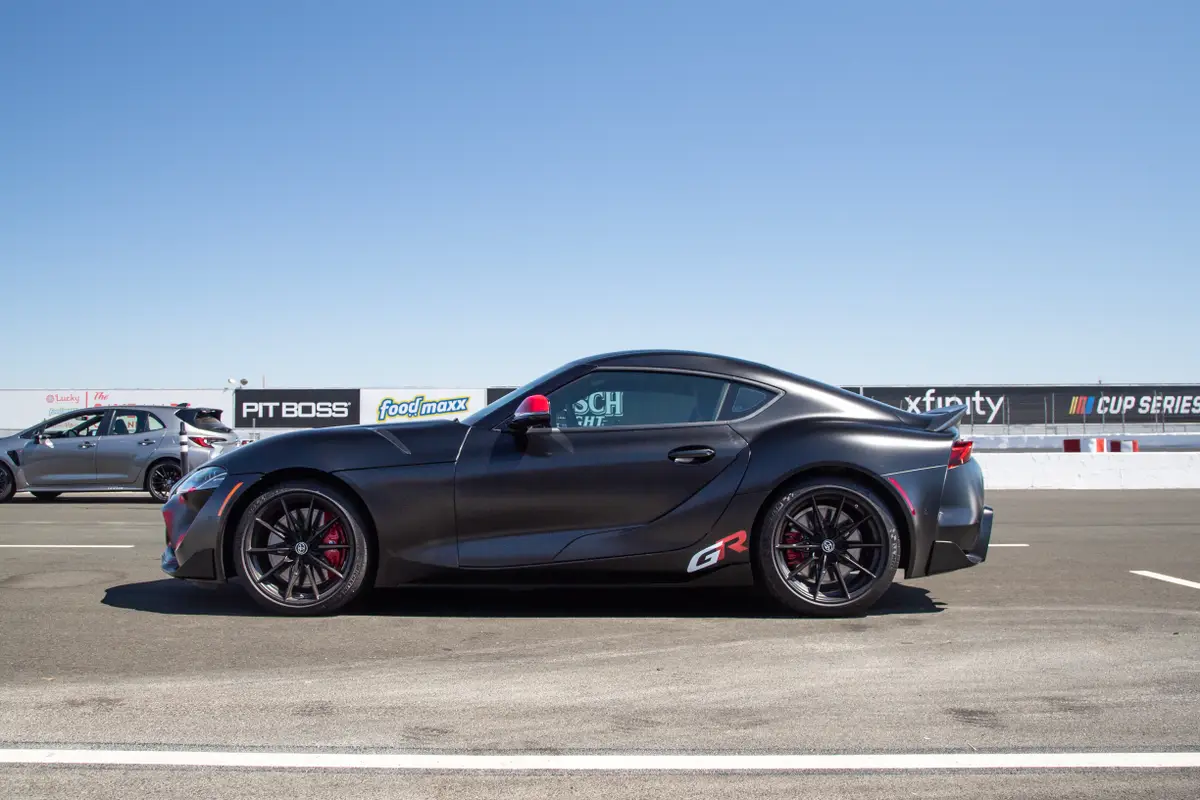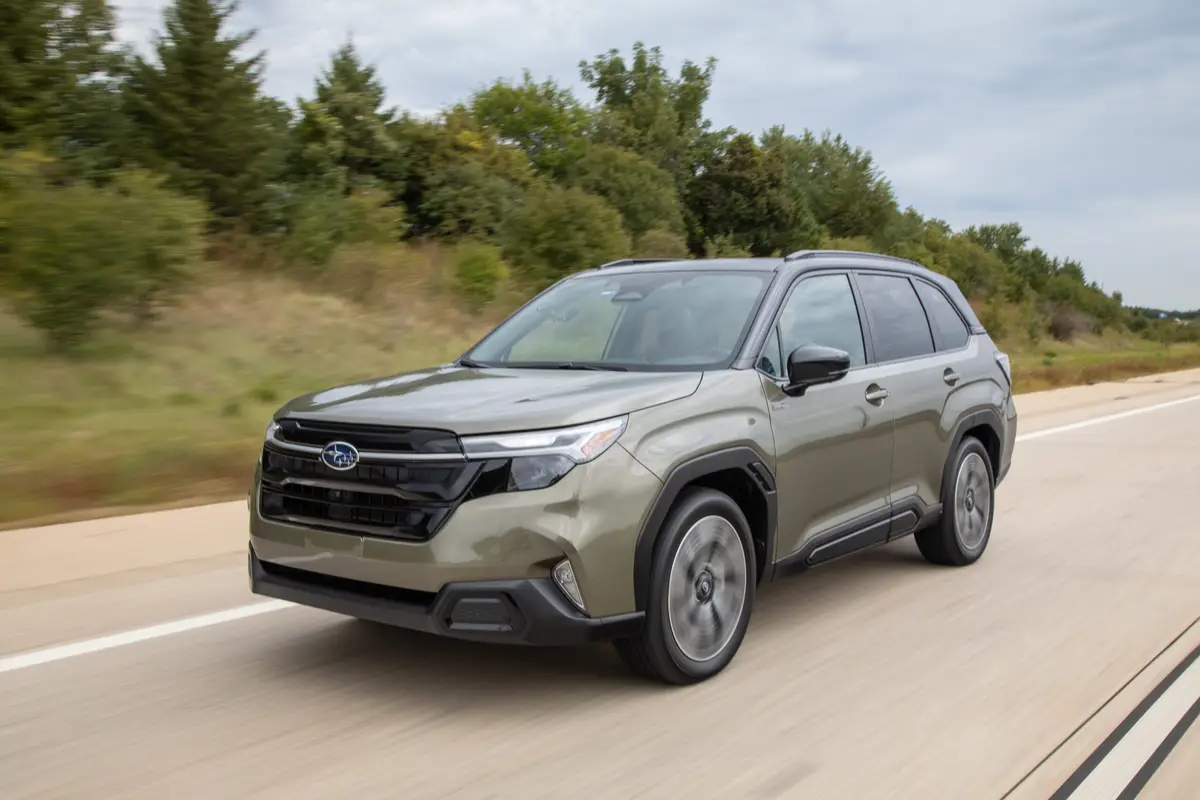What Kia EV Owners Need to Know Before Using a Tesla Supercharger

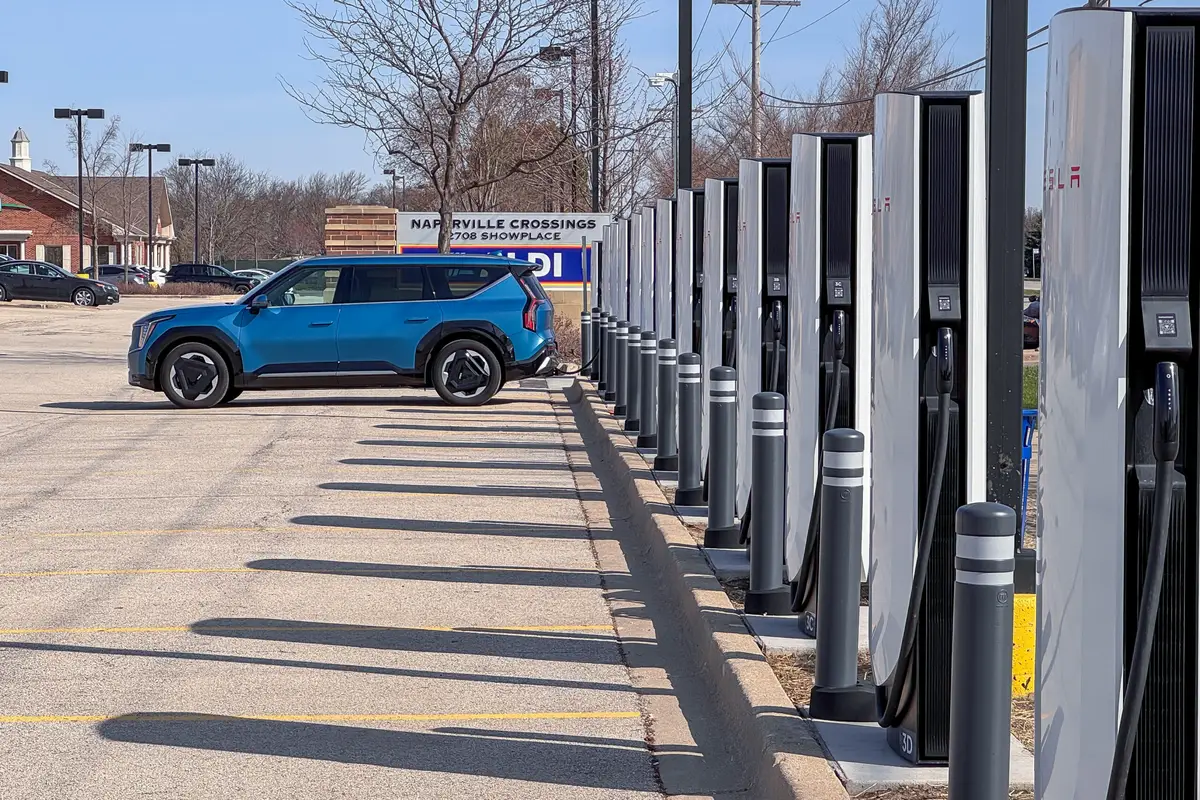
Kia recently announced that its EV6, EV9 and Niro EV electric vehicles now have access to more than 21,500 Tesla Superchargers, a momentous occasion for any Kia EV owner who wanted a larger network of on-the-road DC fast chargers. Ahead of the official launch, we saw that Supercharging a Kia was actually operational via the Tesla app, so I gave it a go to see how well our long-term 2024 Kia EV9 charged on the Tesla hardware.
Related: Kia EVs Get Access to Tesla Supercharger Network
This test is different from our first experience when we fast-charged our EV9 using a Tesla Magic Dock Supercharger with its built-in adapter. For this test, I used a North American Charging Standard-to-Combined Charging System adapter, and used the Tesla app to find a compatible Supercharger and pay for charging, though owners are now able to use the Kia Access app for this. At the moment, our car’s infotainment system hasn’t been updated to filter by Supercharger location, but you can manually search for Superchargers.
Like the first test, charging took significantly longer than what we’ve come to expect when fast-charging our EV9, removing one of its greatest strengths. After chatting with Kia about our experience, there are some key takeaways Kia EV owners should know before hooking up to a Supercharger.
What to Know Before Charging a Kia EV at a Supercharger
- Charging times are slower versus an Electrify America or EVgo 350-kilowatt charger.
- Use a Kia-approved adapter to maintain your warranty; some owners may get one for free.
- You can pay via the Kia app.
- Faster charging is coming with next-generation Supercharger capability.
- Costs vary but are similar to other DC fast chargers.
Taking the ‘Super’ Out of Supercharger
The maximum charging power we observed was 84.3 kW, which remained steady for the duration of the test starting from a 12% charge. This is well below the capability both of the car (210 kW) and of the Supercharger we used (325 kW). The EV9’s preconditioning mode was used before charging to get the battery to its optimal temperature for the fastest charging, though the ambient temperature was around 40-45 degrees Fahrenheit, which is on the chilly side as far as “ideal” charging conditions go.
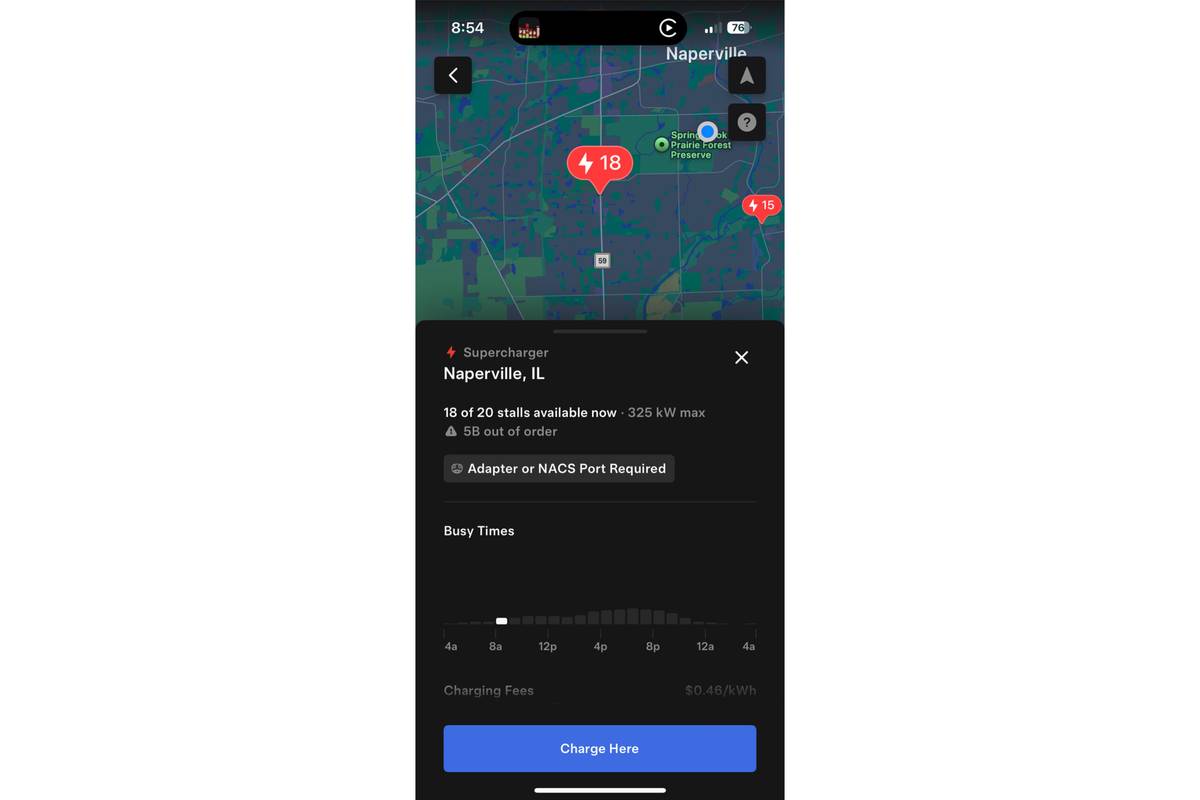
Even so, this isn’t far from what is expected. A Kia spokesperson said consumers should see around 100 kW in ideal conditions.
The result of this lower power output meant it took 30 minutes to charge our EV9’s battery from 12%-50%, far slower and with less energy than the 13%-80% in 24 minutes we’ve observed on a 350-kW Electrify America DC fast charger. This test added 3.9 miles of range per minute (116 miles of range in 30 minutes) versus the 9.3 miles of range per minute (224 miles in 24 minutes) of that Electrify America charging session.
Annoyingly, the EV9 stopped charging after 28 minutes on the Supercharger, which was odd, and required it to reconnect with the Supercharger. It’s hard to say whether this was the fault of the car or Supercharger, but we also encountered a few “handshake” issues while trying to connect the Kia to the Tesla charger.
Faster Charging Coming
A limitation of the current Tesla Supercharger is that it doesn’t tap the full potential of the EV9’s 800-volt charging architecture that enables the SUV’s fastest charging. Tesla Superchargers won’t be able to charge 800-volt EVs at their max potential until the upcoming 1,000-volt-capable, 500-kW V4 Superchargers are fully operational.
“When Tesla upgrades to the V4 power cabinets, we anticipate EV9 owners will have the same experience as other 800-volt stations such as the Ionna network,” a Kia spokesperson said in an email.
The Ionna network is a charging network formed by a group of automakers that can maximize the EV9’s 800-volt fast-charging capabilities, much like we’ve observed with Electrify America and EVgo charging stations, where we’ve seen the best fast-charging performance.
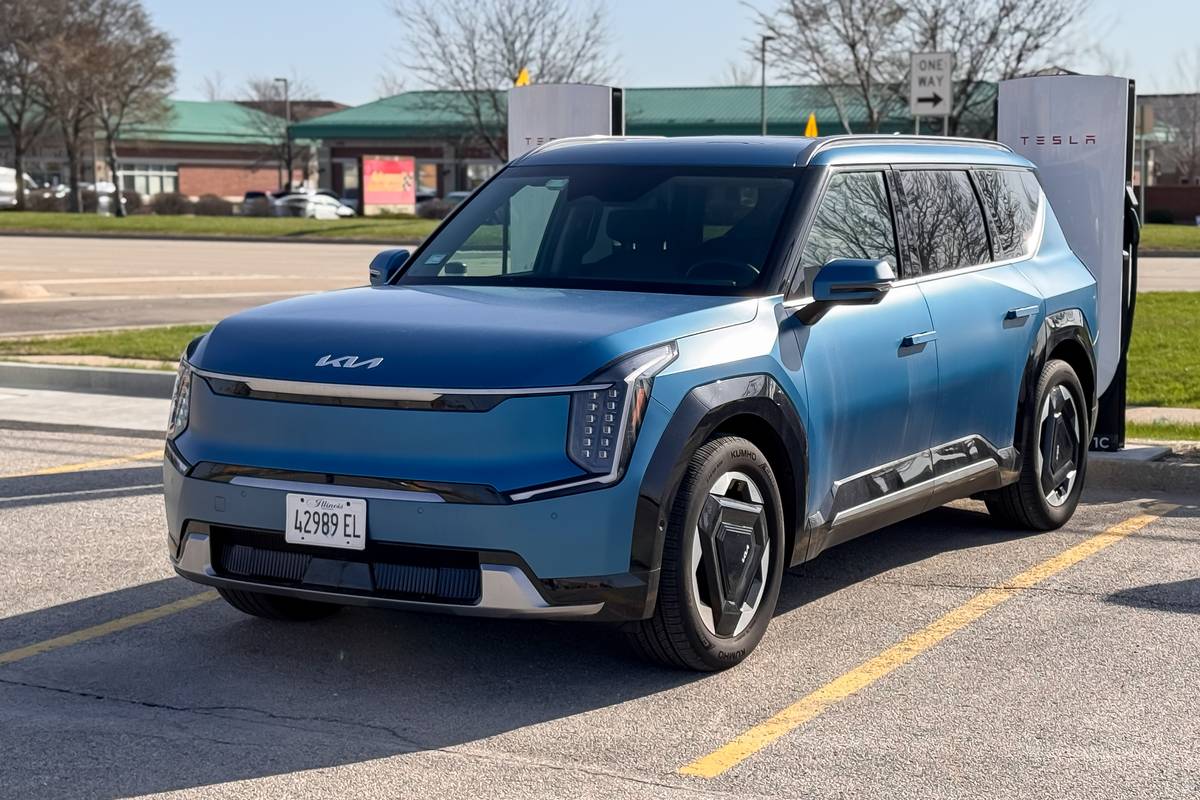
Regarding the Supercharger in our test, it was a V4 post (the upright structure with a charge cord), but without the 500-kW-capable power cabinet (the units typically concealed behind a fenced-off area) that’s still on the way. As of late 2024, Tesla said these cabinets are in the permitting phase. A bonus of this V4 post versus Tesla’s previous chargers was its longer charging cord, which gave easy access to the EV9’s rear passenger-side charge port.
The previous-generation V3 Supercharger is the predominant Tesla charger in the Chicago region, with a maximum power of 250 kW. It’s meant to charge Tesla’s lower-voltage platforms like the Models 3, Y, S and X. However, maximum power isn’t the only indicator of charging speed. When we used V3 Superchargers to charge the 2021 Tesla Model Y we owned for 2.5 years, they generally started high, around 250 kW, with power steadily falling toward the end of the charging session. Our EV9, on the other hand, will maintain its charging speed much longer when fully uncorked on a DC fast charger that maximizes its 800-volt architecture, resulting in more range added in less time.
Right now, the V4-appearing Supercharger we used is more of a hybrid between the V3 and V4 charger styles, with max power of 325 kW but without the V4 cabinet and big power. The 325-kW max supplies a little extra power to Tesla Cybertrucks that are on 800-volt charging architecture, but they will see even faster charging speeds with a fully operational V4 Supercharger.
NACS-to-CCS Adapter Warnings
The hardware used to mate the Supercharger cable with the EV9 was a Lectron Vortex NACS-to-CCS adapter. The Lectron adapter is UL2252-compliant, but it’s not an official Kia-approved adapter. Kia says:
“Lectron is not a Kia-supplied adapter. Kia’s NACS adapters are designed and engineered to meet Tesla’s charging specifications and have been developed and tested for use with Kia EV vehicles. Use of other adapters may result in repairs that are not covered by Kia’s warranty.”
Essentially, use a non-Kia adapter at your own risk. Did using the Lectron adapter cause our slower speeds? Lectron’s Vortex adapter is capable of handling 500 amps and 1,000 volts, so there shouldn’t be a degradation of performance, but to be safe, we’ve bought the official Kia adapter and will try again. Those who took delivery of a new 2024 or 2025 EV9 or 2024 EV6 from Sept. 4, 2024, or later will get a free Kia-approved adapter.
More From Cars.com:
- How Well Does the Kia EV9 Work for a Cold-Weather Road Trip?
- How Well Does the Kia EV9 Drive in the Snow?
- 2025 Volkswagen ID. Buzz Vs. 2024 Kia EV9: Cold-Weather Efficiency Test
- 2025 Volkswagen ID. Buzz Vs. 2024 Kia EV9: Which Is the Better Family EV?
- Best Electric Vehicle of 2025
Is Speed All That Matters?
Unlocking an additional 21,500 chargers represents a significant increase in the number of charging options. But does the number of new chargers make up for the slowed charging experience?
It depends on why you need a DC fast charger. Are you looking to charge in the least amount of time on a road trip? If so, then Kia EV6 and EV9 owners should stick to DC fast chargers that can fully take advantage of their car’s capabilities, like Electrify America, EVgo, ChargePoint and Ionna. Kia Niro EV owners have no such concerns because the Niro EV maxes at 85 kW, which is not a great DC fast-charging capability. In addition to this test, here’s how I know.
Sometimes, however, you just need a charge no matter the wait, and the additional Supercharger access is welcome for an emergency charge or even to open up alternate routes and charging locations if there are service interruptions or a line at other chargers. It’s not uncommon to find an entire group of charging stations in use in congested urban areas, and it’s also not uncommon to encounter problematic or broken DC fast chargers. In this case, having more options, especially a reliable Tesla Supercharger network, could be the difference between getting home and getting towed. Even with the ability to now use a Tesla Supercharger with your Kia EV, we still recommend having at-home Level 2 charging for your everyday driving needs versus relying on DC fast charging.
The cost to charge at a Supercharger or Electrify America charger is similar in our area, with Tesla charging $0.46 per kilowatt-hour and Electrify America charging $0.48 per kWh (pricing changes by location for both Tesla and other DC fast chargers). If you bought or leased a new Kia, it may have limited free charging, too.
There are a couple of reasons why a retest is in order, including the observed power being below the listed capability. While there might not be a huge difference in the results, much of the integration with the car and Kia app wasn’t available yet for this test, and we want to see how that part works. Connecting the Kia to a Tesla Supercharger via the Tesla app was clunky and error-prone, so we hope for a better experience with the official rollout.
Cars.com’s Editorial department is your source for automotive news and reviews. In line with Cars.com’s long-standing ethics policy, editors and reviewers don’t accept gifts or free trips from automakers. The Editorial department is independent of Cars.com’s advertising, sales and sponsored content departments.

Managing Editor Joe Bruzek’s 22 years of automotive experience doesn’t count the lifelong obsession that started as a kid admiring his dad’s 1964 Chevrolet Corvette — and continues to this day. Joe’s been an automotive journalist with Cars.com for 16 years, writing shopper-focused car reviews, news and research content. As Managing Editor, one of his favorite areas of focus is helping shoppers understand electric cars and how to determine whether going electric is right for them. In his free time, Joe maintains a love-hate relationship with his 1998 Pontiac Firebird Trans Am that he wishes would fix itself. LinkedIn: https://www.linkedin.com/in/joe-bruzek-2699b41b/
Featured stories
